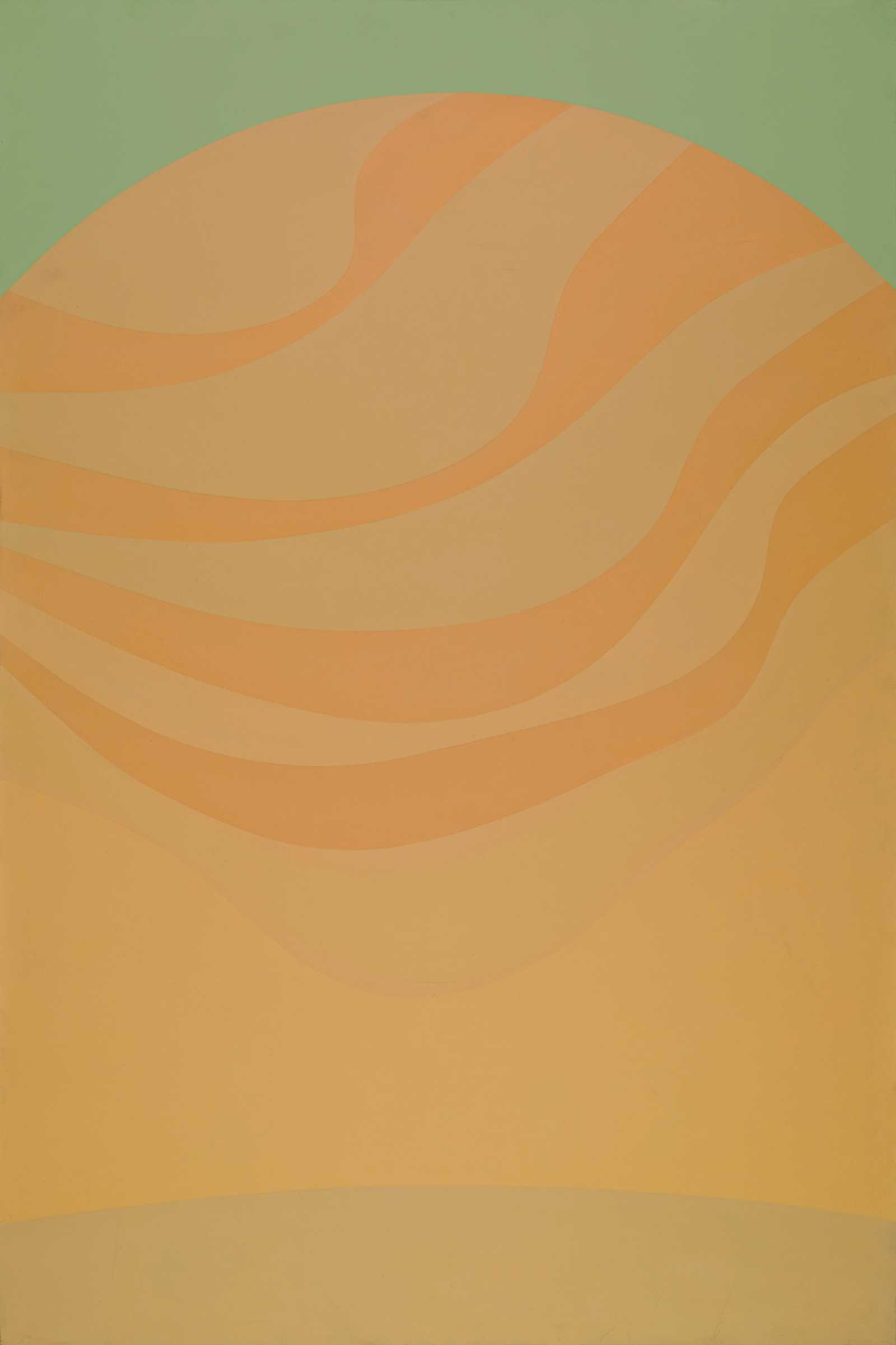Artworks of the Week
Helen Lundeberg
Helen Lundeberg was raised in Southern California and decided to pursue a career as an artist after taking a course at the Stickney Memorial School of Art in Pasadena taught by artist Lorser Feitelson, whom she later married. Lundeberg was a founder—along with Feitelson—of Subjective Classicism, also known as Post-Surrealism. In 1934, the two wrote a manifesto distinguishing their movement from European Surrealism, which focused on the unconscious mind, whereas Post-Surrealism intended to guide viewers through imagery towards deeper meaning.
In the 1950s, Lundeberg began to explore geometric abstraction, creating works that hover between abstraction and figuration, using restricted colors and palettes. In the 1960s and 1970s, her work focused on landscapes, interiors, still lifes, and planetary forms, and her last body of work in the 1980s featured landscapes and architectural elements.
Planet Rising was a gift of the artist to Palm Springs Art Museum and is one of seven paintings by Lundeberg in the collection. Here, she returns to planet imagery—a subject which had interested her since her early Post-Surrealist work. She deploys rationality rather than emotion in this piece, applying her fascination with order and structure through the cosmos and planetary movements, as well as the otherworldly desert-like landscape below.
Helen Lundeberg (American, 1908-1999), Planet Rising, 1967, acrylic on canvas, 59 3/4 × 39 7/8 inches. Gift of the artist, 28-1969.
Tam Van Tran
Since the early 1990s, Tam Van Tran has been producing a multi-faceted body of work comprising abstract paintings, mixed-media collages, ceramic tiles, and sculpture. By mixing traditional art materials such as linen and acrylic with unconventionally applied organic substances (including spirulina, chlorophyll, wood), staples, and aluminum foil, Tran creates colorful and highly textured works that formally and thematically unite Eastern and Western influences.
In this piece, the artist paints with spirulina algae mixed with acrylic on torn and hole-punched layers of paper, fastened with staples that delineate and punctuate the curves of the artwork. The textured surface seems at once lacy and armored, resonating with animal skins, plant leaves, and industrial materials. This fusion of elements reflects the artist’s ongoing interest in how natural and human-made phenomena coexist in the world. The undulating structure of parabolic curves combines mathematical symmetry with organic forms, suggesting a synthesis of technology and nature.
Tam Van Tran (American, born Vietnam, 1966), Nonceptual Space, 2009, acrylic, spirulina and staples on paper and museum board, 87 x 106 x 16 inches. Museum purchase with funds provided by Gladys Rubinstein, Angie and Harvey Gerber, Helene Galen, David Kaplan and Glenn Ostergaard, Lynn and Robert Zimmer, and Myrna Kaplan, 2-2010.


